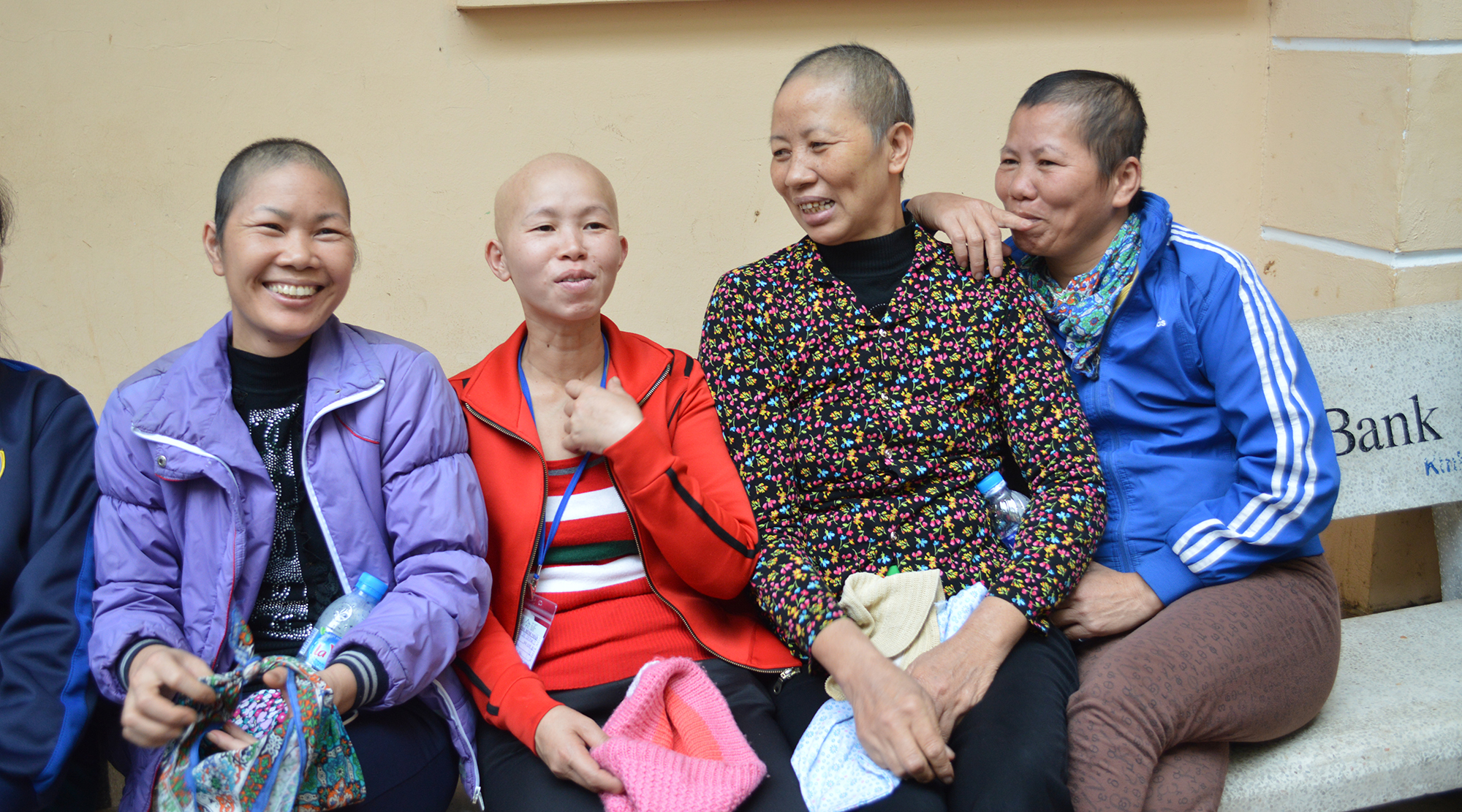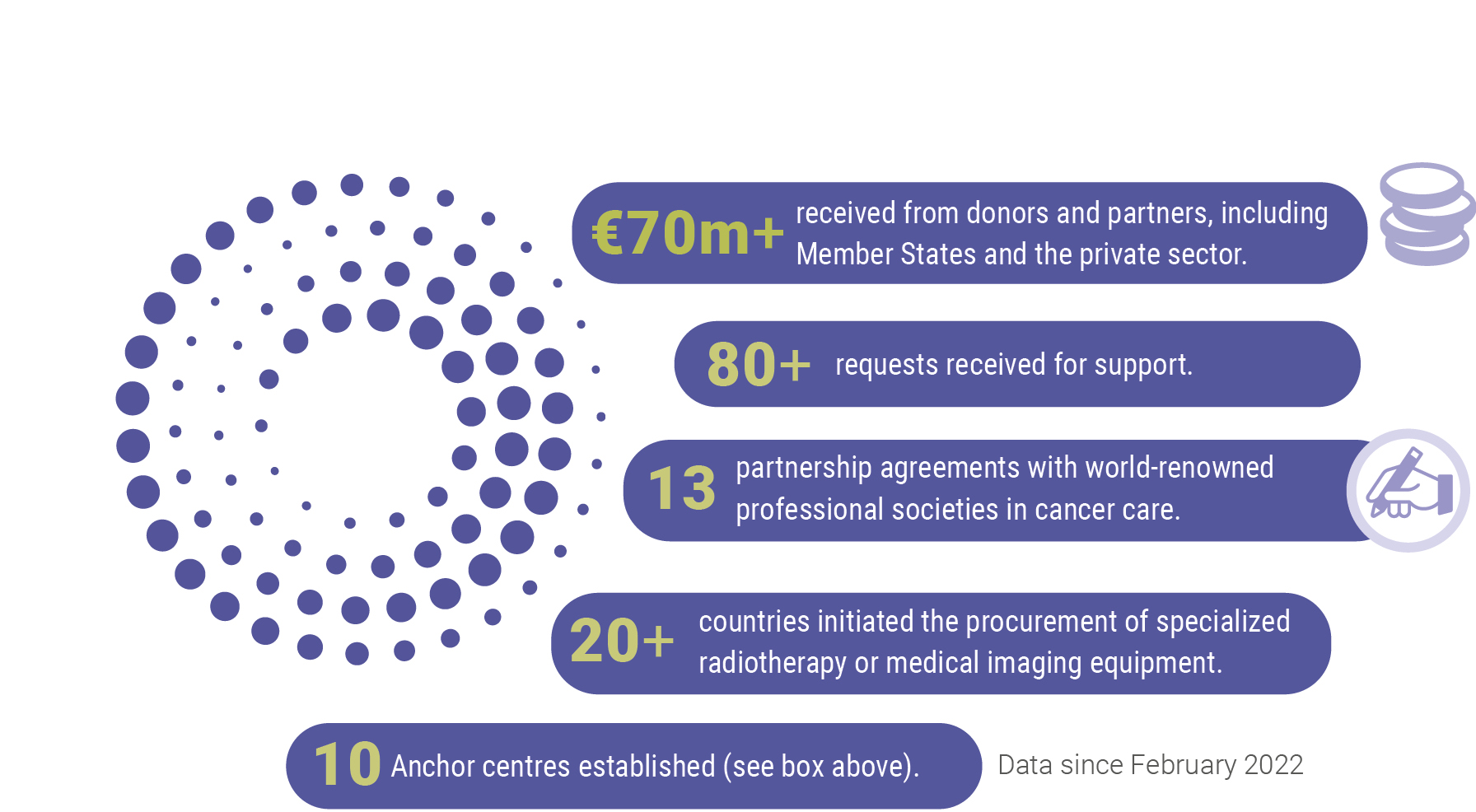Under the Rays of Hope: Cancer Care for All initiative, the IAEA works with international organizations and partners including the World Health Organization (WHO) to provide expertise, training and resources around the world, enabling cancer patients to access safe and secure radiotherapy and diagnostic imaging services.
For many years already, the IAEA has been conducting imPACT Reviews – comprehensive assessments of a country’s cancer control capacities and needs – with the WHO and the International Agency for Research on Cancer (IARC), using an evidence-based approach to expanding access to cancer care. To date, around 130 such reviews have been carried out in support of countries around the world. imPACT Review recommendations have helped inform technical cooperation projects, national cancer control plans and strategic funding documents.
The IAEA has also designated ten cancer institutes around the world as Rays of Hope regional anchor centres to serve as regional knowledge, capacity-building, research and innovation hubs providing targeted support in training, research and quality assurance. These centres have a demonstrated record of working with the IAEA, deep technical expertise and robust governance and medical infrastructures. By strengthening and expanding the capacity of a selected centre to conduct its critical work, the IAEA aims to maximize the delivery of high impact interventions to cancer patients.
Since data are pivotal for advancing cancer treatment, research and education, the IAEA is also developing a global radiation medicine database (SUNRISE) under the Rays of Hope initiative. The insights generated by this database on the impact of radiation medicine initiatives will help policymakers and practitioners alike to undertake more targeted action.
Here are just a few examples of how the IAEA has been supporting different regions, including through Rays of Hope:
In Latin America and the Caribbean, the procurement of 32 mammography units was initiated in 2024 to support breast cancer screening services and diagnosis. When complete, this will allow up to 250 000 women in 19 countries to be screened every year. The IAEA also offered technical guidance to help centres to plan, design and operate high quality and safe screening services.
Since 2023, Ukraine has received expert advice, equipment and training to address its urgent and increasing needs to diagnose and treat cancer patients. Efforts are also under way to train more professionals in radiology, nuclear medicine and radiotherapy through a comprehensive, multidisciplinary virtual training programme and the establishment of an in-country training facility.
Under the framework of Rays of Hope, Indonesia has been receiving support, including on the development a national roadmap for scaling up radiotherapy and nuclear medicine services. The 2024 imPACT Review helped inform the development of Indonesia’s National Cancer Control Plan 2024–2034 which was announced in October 2024.
With its current cancer population of nearly 20 000 expected to double by 2045, Malawi was one of the seven ‘first wave’ countries to join Rays of Hope when it launched in February 2022. Since joining the initiative, long term training and refresher courses for radiotherapy and medical imaging professionals have been held. A linear accelerator, high dose rate brachytherapy machine, computed tomography (CT) simulator and dosimetry equipment have been delivered, with additional equipment in the process of being procured. Now that radiotherapy and brachytherapy bunkers have also been constructed, Malawi is ready for the launch of its first public radiotherapy facility.
In April, an anchor centre in Türkiye held a week-long workshop which brought together nearly 100 professionals from Europe and Central Asia to successfully develop a roadmap to strengthen paediatric radiotherapy services. In August, an anchor centre in Japan organized a course which trained nuclear medicine physicians from 15 different countries on streamlined and emerging theranostics techniques to diagnose and treat cancer patients.
“Our resources and commitment will all be mobilized to ensure the success of the Rays of Hope initiative,” said Artit Ungkanont, “as we collectively strive to bring Rays of Hope to communities in need.” Dean of Mahidol University’s Faculty of Medicine as its Ramathibodi Hospital in Thailand became an anchor centre.
_____________________________________________________________________________________________________________________________________



